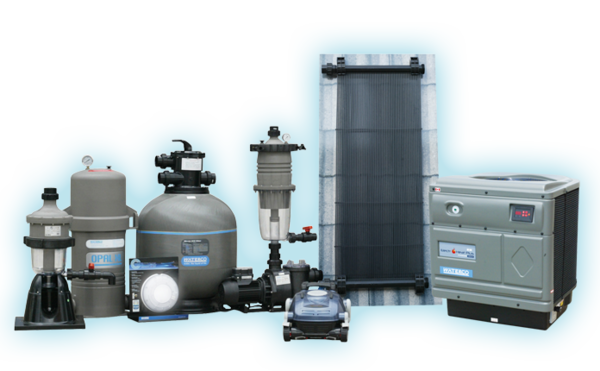
Contrary to common belief, the filter connected to a pool does not sanitise the water. Instead, it is the chemicals circulating through the pool that sanitise it. The function of the filter is to collect debris and restrict particles from floating out into the pool. Swimming pool filtration systems play a significant role in creating the crystal-clear water that every swimmer desires.
Every swimming pool filter system does the same job. The only difference is how it does the job. There are skimmers in every pool, and some pools have one or two drains on the pool floor. When the filter pump starts working, water (and particulates) are drawn into the skimmers and drained through the piping, into the pump, into the filter, and then jettisoned back into the pool. This is the cycle for pool filtration.
With that being said, there is a lot to take into account when it comes to choosing the best pool filter for your pool. All of them keep your pool clean and clear of leaves, dirt, and debris. But what are the differences? How do they work, and what can they do?
Sand Filters
The most compact and economical way to filter an in-ground or above-ground pool is with sand filters. Sand filters work because they are filled with specially built, roughly shaped pool-filter sand that removes the dirt and debris flowing through your filtration system. Clean water then exits through the outlet port of the filter and back into the pool.
A backwashing effect occurs in the sand pool filter once water flows out through the waste line, cleaning the filter. The sand is usually replaced about every five to eight years, depending on the usage.
Note: The water flow pressure will decrease as the filter sand gets older and dirtier. This reduction in the water flow pressure would, in turn, increase the filter's pressure which is indicated by the pressure gauge installed on it. This informs you that it is time to backwash the equipment.
Pros
- Removes dirt and debris down to 20–40 microns
- Simple to use and easy to operate
- Reliable
- Great for pools with high flow rate capacity
Cons
- Requires frequent maintenance
- Insufficient pools with low flow rate capacity
- Backwashing in saltwater pools can lead to high salt costs
Cartridge Filters
Cartridge filters can screen out twice as much dirt and debris as sand filters. The larger filtration area makes it possible for the water to pass through the cartridge and remove tiny particles. Maintenance is much simpler because a backwashing phase is not necessary. Since water and pool chemicals will not be continuously removed, saves you a lot of money.
All there is to do is to take out the system’s pool filter cartridge, which you have the option to either replace it or wash it off. These filters also reduce cost by using low pump pressure, but they can have a higher upfront price. However, they will extend the lifespan of your pool pump because the pressure required is low.
Pros
- Easier to maintain than sand filtration systems
- Removes debris as small as 10–15 microns
- Reduces energy costs by allowing the use of low pump pressure
- Won’t waste the salt in saltwater pools
Cons
- Costs can be higher compared to sand filters
- Needs frequent cleaning and careful handling
In a Nutshell
Always size the correct pump with the right filter, no matter which form of filter you select. Too much flow can cause higher filter pressure and produce excessive system back-pressure.
A wrong match will easily break the pump and plumbing system. For your unique needs, please feel free to get in touch with our specialists.